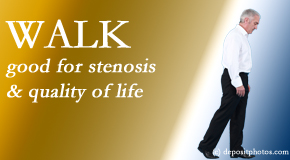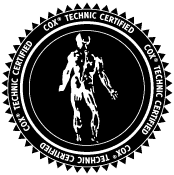Richmond Walking and Non-Drug Therapy for Back Pain and Stenosis
Lumbar spinal stenosis and its related back pain is widespread and troubling for many. Dementia, neurogenic claudication, decreased walking distance, poor balance, decreased quality of life, and modified posture often accompany spinal stenosis. Disc herniations, disc degeneration, and other spinal canal space invaders invite spinal stenosis. At Johnson Chiropractic, Richmond spinal stenosis patients who want to uninvite spinal stenosis have a partner by their side.
THE IMPACT OF LUMBAR SPINAL STENOSIS
Research keeps presenting lumbar spinal stenosis as being linked to conditions like dementia development, walking capacity, and reduced quality of life. A recent study stated that lumbar spinal stenosis was an independent risk factor for acquiring dementia. Of 1220 patients, 10.8% of the lumbar spinal stenosis patients experienced dementia compared to only 4.4% of the control group members. (1) Older adults with lumbar spinal stenosis were described as changing their posture with a forward bend to improve their ability and tolerance for walking. Researchers who studied this phenomenon found that this posture was more of a forward shift of the pelvis while standing and walking. They deduced that limited walking in symptomatic spinal stenosis patients was more related to spine loading which rose 7%. (2) Whatever it is linked to, decreased walking ability isn’t beneficial. Someday it will be nice to more fully understand the role of stenosis in relationship to inhibited walking, but for now, Johnson Chiropractic will keep encouraging walking for spinal stenosis patients, slow and steady and distance furthered as tolerated.
THE TREATMENT OF LUMBAR SPINAL STENOSIS: Walk
Since spinal stenosis is so common a condition in older folks, multiple guidelines and articles are published and with good reason. Decreased walking ability and quality of life are documented side-effects of lumbar spinal stenosis. These two issues persist as the leading factors for back surgery in older sufferers. Sadly, 40% of those who undergo spinal surgery for the lumbar spinal stenosis still state walking issues post-surgery. (3) Recommendation 1 of a more recent guideline for handling lumbar spinal stenosis and related neurogenic claudication suggested non-surgical multimodal care to include non-drug therapy with education, advice, lifestyle changes, home exercise, manual therapy, acupuncture (trial), rehab, and therapy. (4) An update to the 2013 Cochrane review of research reports regarding the outcomes of treatments for lumbar spine stenosis related neurogenic claudication that reduced the ability to walk found that manual therapy and exercise to increase walking distance together was a beneficial treatment approach. Epidural steroids weren’t. (5) Conservative, non-surgical care of Richmond spinal stenosis is recommended by spine researchers and by Johnson Chiropractic.
CONTACT Johnson Chiropractic
Listen to this PODCAST with Dr. Nate McKee on The Back Doctors Podcast with Dr. Michael Johnson as he illustrates the relief with The Cox® Technic System of Spinal Pain Management for a patient with lumbar spinal stenosis and balance issues. Relief with Cox® Technic is described.
Schedule your Richmond chiropractic appointment today for increased walking and reduced back pain due to Richmond lumbar spinal stenosis!


